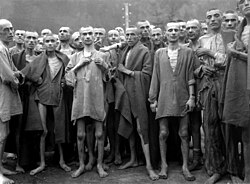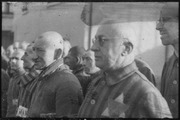This article needs additional citations for verification .(August 2011) |

Identification of inmates in Nazi concentration camps (operated by Nazi Germany in its own territory and in parts of German-occupied Europe) was performed mostly with identification numbers marked on clothing, or later, tattooed on the skin at Auschwitz. More specialized identification was done with badges on clothing and armbands.




















